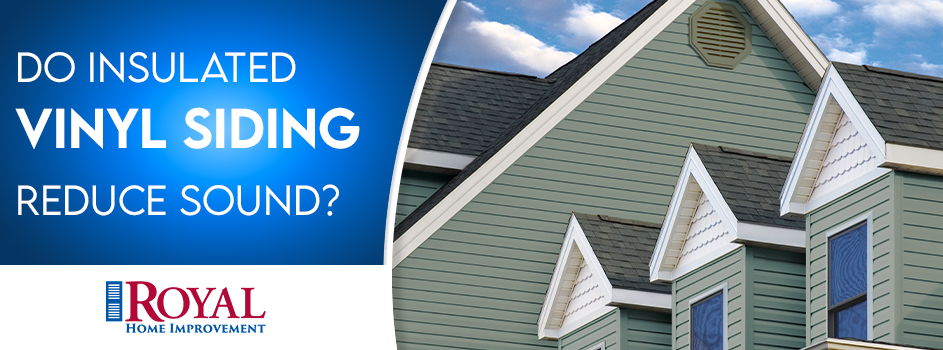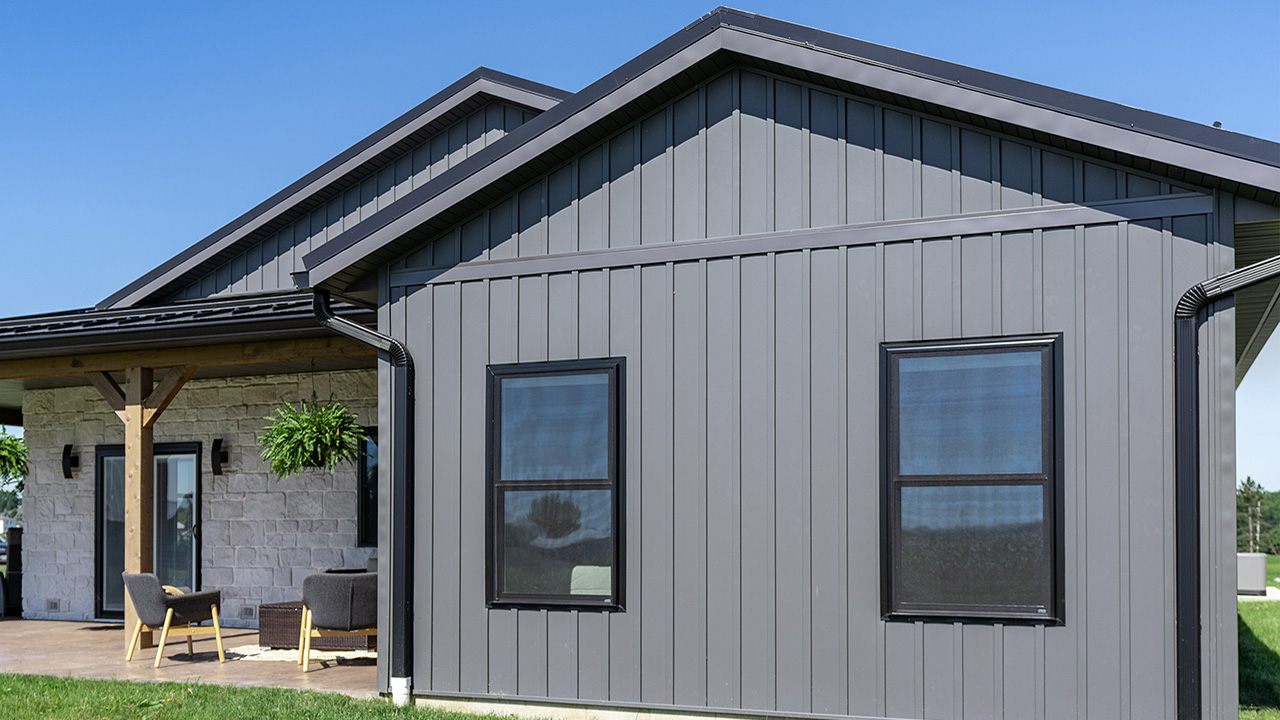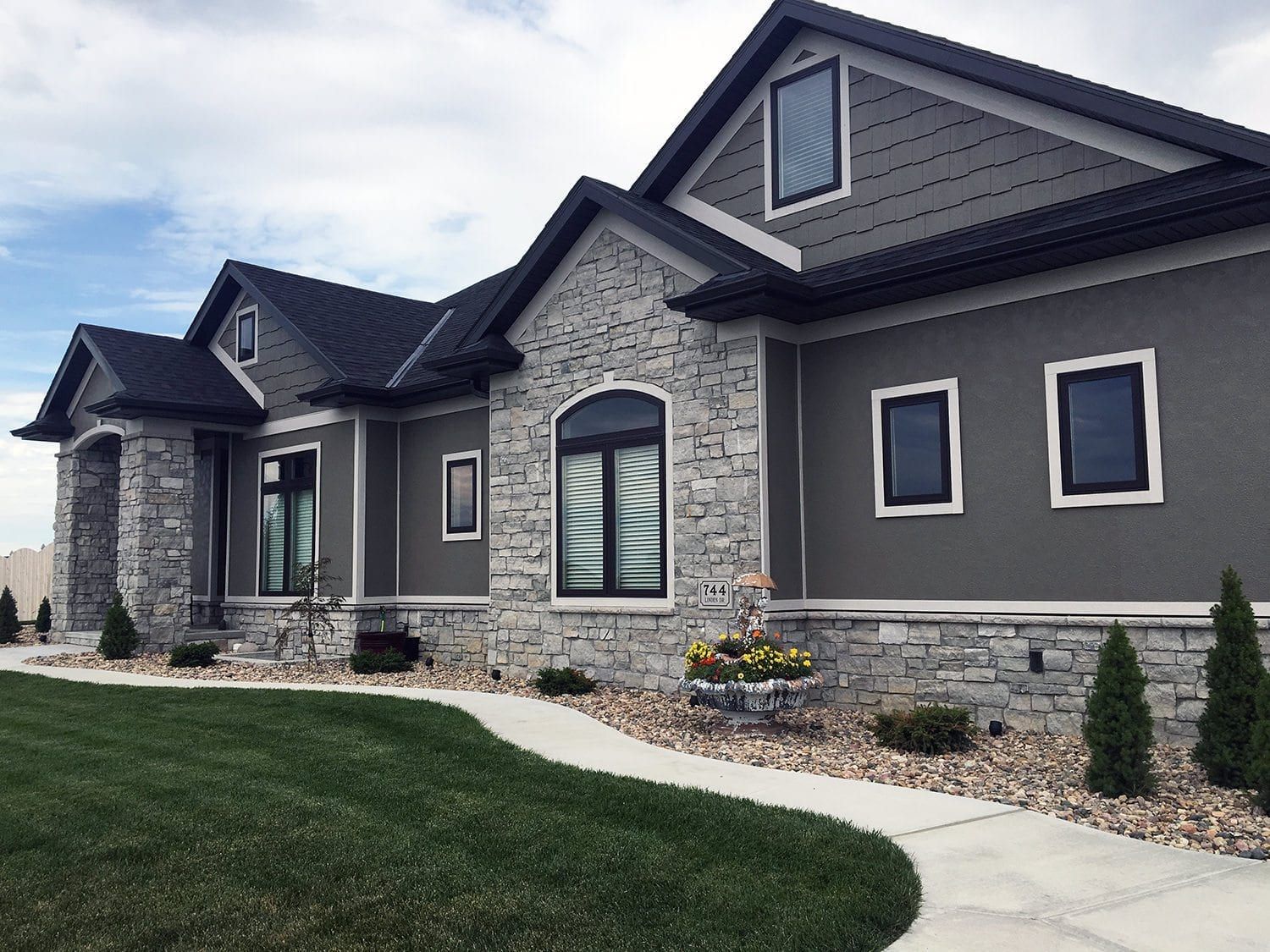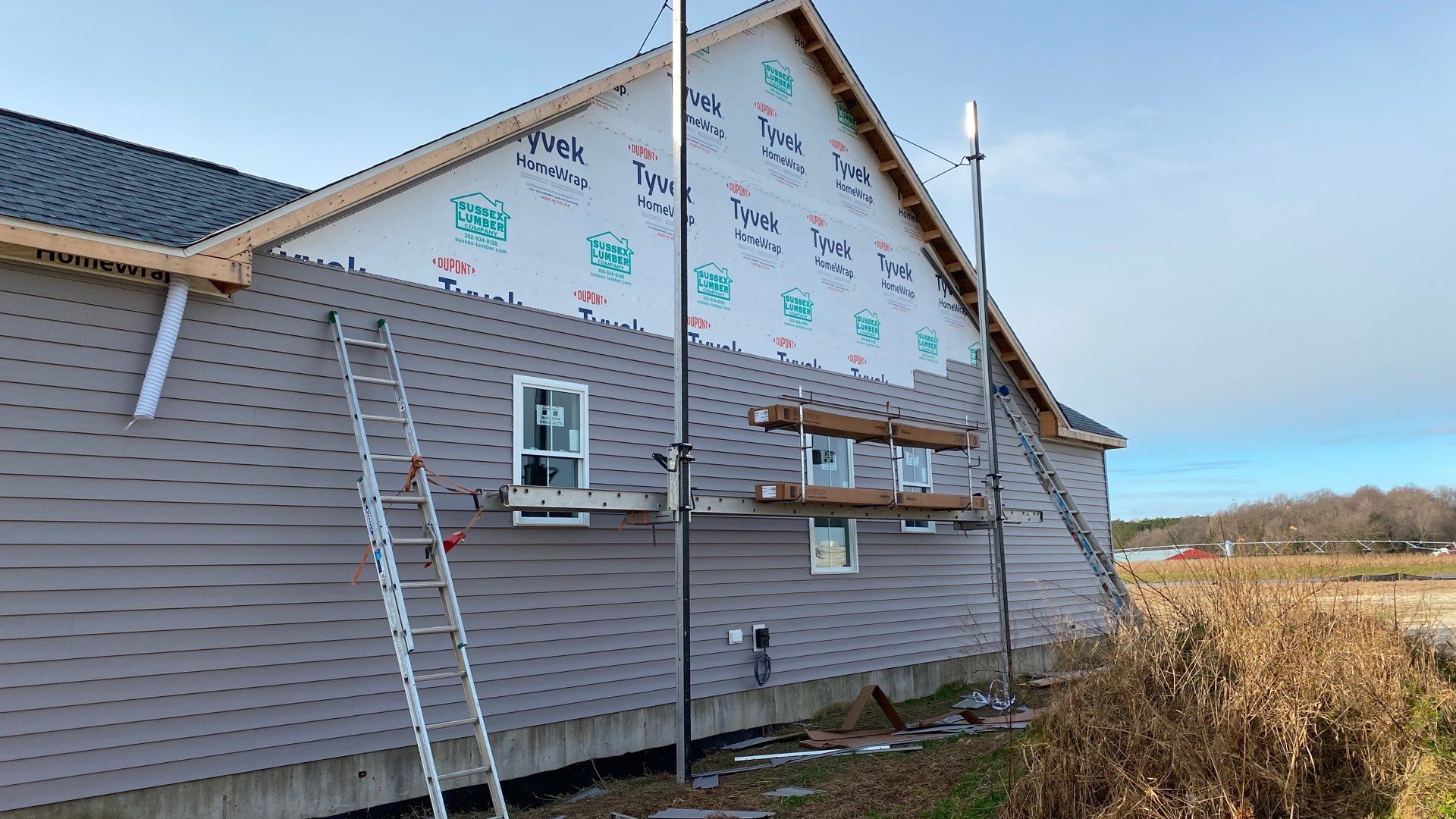Insulated Siding for Noise Reduction

Insulated siding for noise reduction offers a quiet revolution for homes and businesses alike. Imagine a world where the clamor of city life fades, replaced by the gentle hush of peace within your walls. This isn’t a fantasy; it’s the promise of strategically designed siding that effectively mutes unwanted noise, transforming your space into a sanctuary of calm. This exploration delves into the science and practicality of this transformative technology.
We’ll explore various siding materials, from the familiar vinyl to the robust fiber cement and innovative foam options, comparing their noise-dampening properties and cost-effectiveness. Understanding the impact of thickness and density will be crucial, as will the intricacies of proper installation, including the vital role of sealing and caulking. We’ll also consider how other building components interact with the siding to create a holistic soundproofing system, ultimately guiding you towards making informed decisions for a quieter, more peaceful environment.
Types of Insulated Siding for Noise Reduction
Choosing the right insulated siding can significantly impact your home’s soundproofing. Different materials offer varying levels of noise reduction, lifespan, and maintenance needs. Understanding these differences is crucial for making an informed decision.
Insulated Siding Materials and Noise Reduction
The effectiveness of insulated siding in reducing noise depends heavily on the material used. Thicker and denser materials generally offer better sound insulation. Here’s a comparison:
| Material | R-Value | Noise Reduction Decibels (dB) | Cost Considerations |
|---|---|---|---|
| Vinyl Siding with Foam Backing | Variable, depending on foam thickness (typically R-5 to R-8) | Approximately 20-30 dB reduction, depending on installation and thickness | Relatively affordable, but may require more frequent repainting compared to other options. |
| Fiber Cement Siding with Foam Backing | Variable, depending on foam thickness (typically R-5 to R-10) | Approximately 25-35 dB reduction, superior to vinyl due to density | More expensive than vinyl, but offers superior durability and longevity. |
| Foam Siding (Polyurethane or Polyisocyanurate) | High R-values (R-6 to R-8 per inch) | Can offer significant noise reduction (30-40 dB or more depending on thickness) | Can be more expensive than vinyl or fiber cement, but often requires less maintenance. |
Impact of Thickness and Density on Sound Insulation
The thickness and density of siding materials directly influence their sound-dampening properties. Thicker materials provide more mass to absorb and block sound waves. Similarly, denser materials are less likely to vibrate in response to sound, reducing sound transmission. For instance, a thicker layer of foam backing on vinyl siding will provide better sound insulation than a thinner layer. Fiber cement, being inherently denser than vinyl, offers better sound blocking even with similar thickness. Foam siding, due to its cellular structure, can offer excellent sound insulation even at moderate thicknesses.
Lifespan and Maintenance of Insulated Siding Options
Regular maintenance extends the life of any siding. Different materials require varying levels of care.
| Material | Lifespan (Years) | Maintenance Requirements |
|---|---|---|
| Vinyl Siding with Foam Backing | 30-50 | Occasional cleaning; repainting may be needed every 10-15 years. |
| Fiber Cement Siding with Foam Backing | 50-80 | Periodic cleaning; may require repainting less frequently than vinyl. |
| Foam Siding (Polyurethane or Polyisocyanurate) | 30-50 | Generally low maintenance; occasional cleaning is usually sufficient. |
Installation Techniques and Noise Reduction Effectiveness
Installing insulated siding correctly is crucial for achieving its promised noise reduction benefits. A poorly installed system will leave gaps and weak points, negating much of the soundproofing potential. Careful attention to detail during installation is key to a quieter home.
Proper installation ensures a continuous barrier against sound transmission, minimizing noise intrusion. This involves meticulous attention to every joint and seam, creating a sealed envelope around your home’s exterior. The quality of materials and the precision of the installation process directly impact the overall effectiveness of the noise reduction.
Proper Sealing and Caulking
Effective sealing and caulking are essential for preventing sound leakage through gaps in the siding installation. Airborne sound waves can easily travel through even small openings. By sealing these gaps, we significantly reduce the transmission of sound energy. High-quality, paintable caulk should be applied liberally to all seams, joints, and penetrations in the siding system. This creates an airtight barrier, preventing sound from bypassing the insulated siding.
Comparison of Installation Methods
Different installation methods yield varying degrees of noise reduction. Overlapping siding panels create a more robust barrier against sound transmission than butt-jointed panels. The overlapping method minimizes gaps and provides a more consistent and continuous sound barrier. Butt-jointed installations, while simpler, leave small gaps at the seams that can compromise sound insulation, even with careful caulking. For optimal noise reduction, overlapping is generally preferred.
Best Practices for Installation
Proper installation maximizes the noise reduction capabilities of insulated siding. The following steps are crucial:
- Prepare the surface: Ensure the underlying wall is clean, dry, and free of any loose debris. This provides a solid base for the siding installation and prevents gaps from forming.
- Install furring strips: Installing furring strips creates an air gap between the wall and the siding, enhancing insulation and reducing sound transmission. This allows for ventilation and further improves the overall sound dampening.
- Precise measurements and cutting: Accurate measurements and careful cutting of siding panels are essential to ensure a tight fit and minimize gaps. Improperly sized panels can lead to significant sound leakage.
- Secure fasteners: Use the correct type and size of fasteners to securely attach the siding panels to the wall. Overly tight or loose fasteners can damage the siding or create gaps.
- Thorough caulking and sealing: Apply a generous amount of high-quality caulk to all joints, seams, and penetrations to create a continuous, airtight seal. This is crucial for preventing sound leakage.
Factors Affecting Noise Reduction Beyond Siding
While insulated siding plays a crucial role in reducing exterior noise, it’s just one piece of the puzzle. A home’s overall sound insulation depends significantly on the performance of other building components working together. Think of it like a chain – its strength is only as good as its weakest link.
The interaction between insulated siding and other elements is key. Even the most effective siding will be less impactful if other areas, such as windows or doors, allow noise to penetrate easily. Imagine a fortress with a strong outer wall (the siding) but weak gates (the windows and doors). The fortress won’t be secure.
Building Components and Their Impact on Sound Insulation
Several building components significantly contribute to a home’s overall sound insulation. These include windows, doors, wall insulation, and even the ceiling. Each element possesses different acoustic properties and plays a distinct role in blocking sound transmission. A well-insulated home needs a holistic approach, considering each of these elements.
Interaction of Insulated Siding with Other Building Elements
Insulated siding primarily reduces noise transmitted through the exterior walls. However, its effectiveness is significantly impacted by the performance of other building components. For instance, if windows are single-paned and poorly sealed, much of the noise reduction achieved by the siding will be negated. Similarly, gaps around doors or insufficient wall insulation can create pathways for sound to bypass the siding’s barrier. Therefore, achieving optimal noise reduction requires a coordinated approach, ensuring all components work together harmoniously.
Relative Contribution of Building Components to Noise Reduction
The following table illustrates the relative contribution of different building components to overall noise reduction. These values are approximate and can vary based on specific materials, construction techniques, and environmental factors. This table provides a general guideline rather than precise measurements.
| Building Component | Approximate Contribution to Overall Noise Reduction (%) |
|---|---|
| Exterior Walls (including siding) | 30-40 |
| Windows | 25-35 |
| Doors | 10-15 |
| Interior Walls | 10-15 |
| Ceiling/Roof | 5-10 |
Case Studies and Examples of Noise Reduction with Insulated Siding
Insulated siding’s effectiveness in noise reduction isn’t just theoretical; it’s demonstrably proven in various real-world applications. Numerous case studies highlight its ability to significantly improve the acoustic comfort of buildings, leading to quieter and more peaceful environments. These examples showcase the practical benefits across different building types and noise pollution scenarios.
The following examples illustrate how insulated siding has made a tangible difference in reducing noise levels in diverse settings. The success of these installations depends on several factors, including the type of siding used, the quality of installation, and the existing structure of the building. However, these examples offer compelling evidence of the technology’s effectiveness.
Residential Applications of Noise Reduction with Insulated Siding
In residential settings, insulated siding offers a practical and aesthetically pleasing solution to noise pollution from busy streets, airports, or noisy neighbors. The reduction in noise can significantly enhance the quality of life for residents.
- A suburban home located near a busy highway experienced a noticeable decrease in traffic noise after the installation of vinyl insulated siding. Residents reported a significant improvement in sleep quality and overall peacefulness.
- A family living near a railway line installed insulated fiber cement siding, resulting in a reduction of train noise by approximately 10 decibels, making their home much more livable.
- A townhouse community bordering a park with frequent outdoor events found that the installation of insulated metal siding effectively dampened the noise from concerts and other activities.
Commercial Applications of Noise Reduction with Insulated Siding
Beyond residential use, insulated siding provides substantial noise reduction benefits for commercial buildings, enhancing the working environment and potentially increasing property value.
- An office building situated near an airport significantly reduced the noise intrusion from aircraft using insulated vinyl siding, creating a calmer atmosphere for employees.
- A school located in a bustling urban area installed insulated fiber cement siding, improving classroom acoustics and reducing street noise, leading to a more focused learning environment.
- A hotel near a major highway experienced a marked decrease in road noise after installing insulated metal siding, improving guest comfort and satisfaction.
Cross-Section of a Wall with Insulated Siding
Imagine a cross-section of an exterior wall. The outermost layer is the insulated siding itself, perhaps a thick panel of vinyl or fiber cement. This layer acts as the first line of defense against noise, its material composition and thickness contributing to sound absorption and reduction. Behind this is a layer of air space, further dampening sound waves. Then comes the wall sheathing, providing structural support. Finally, the interior wall finishes contribute to the overall sound insulation of the structure. The air gaps between layers act as acoustic barriers, preventing the direct transmission of sound waves into the building. The insulation material within the siding further absorbs sound energy, significantly reducing the noise that penetrates the structure. The combination of these layers works synergistically to create a sound-dampening barrier, resulting in a quieter interior environment.
Cost-Benefit Analysis of Insulated Siding for Noise Reduction
Investing in insulated siding for noise reduction requires careful consideration of both upfront costs and long-term savings. While the initial expense might seem significant, the benefits extend beyond simply quieter living, encompassing energy efficiency and increased property value. This analysis explores how to weigh these factors to determine the overall return on investment.
The initial investment for insulated siding includes the cost of materials, labor for installation, and any necessary preparation work such as removing existing siding. Prices vary widely depending on the type of siding chosen (vinyl, fiber cement, etc.), the size of the house, and regional labor rates. A realistic budget should encompass not only the materials but also potential unforeseen expenses during installation.
Initial Investment Costs
The cost of insulated siding typically ranges from $8 to $20 per square foot, depending on the chosen material and complexity of the installation. This includes the cost of the siding itself, underlayment, and labor. For a 2,000 square foot home, the total cost could range from $16,000 to $40,000. This estimate is broad and requires obtaining specific quotes from contractors in your area. Factors like the existing condition of the walls and the need for additional repairs can significantly impact the final price. It’s crucial to get multiple bids to compare pricing and services offered.
Long-Term Benefits: Noise Reduction and Energy Savings
Reduced noise pollution offers significant intangible benefits, enhancing the quality of life within the home. A quieter environment contributes to better sleep, reduced stress, and improved concentration. These benefits are difficult to quantify financially but are substantial considerations for those living in noisy areas. Furthermore, the improved insulation provided by insulated siding leads to lower energy bills. The thicker material acts as a barrier against heat loss in winter and heat gain in summer, reducing the strain on your heating and cooling systems. This translates into direct cost savings on your monthly energy bills. For instance, a study by the Department of Energy showed that proper insulation can reduce energy consumption by up to 30%. This percentage can vary depending on climate and the existing insulation level of the house.
Return on Investment Calculation
Calculating the return on investment (ROI) for insulated siding involves comparing the initial cost with the long-term savings. To illustrate, let’s consider a hypothetical scenario:
ROI = (Total Savings – Initial Investment) / Initial Investment * 100%
Suppose the initial investment for insulated siding is $20,000. Assume annual energy savings of $800 due to improved insulation and a 10% increase in property value after 10 years (approximately $20,000). The total savings over 10 years would be $8,000 (energy savings) + $20,000 (property value increase) = $28,000.
ROI = ($28,000 – $20,000) / $20,000 * 100% = 40%
This indicates a 40% return on investment over 10 years. However, this is a simplified example. A more accurate calculation would require detailed cost breakdowns and precise estimates of energy savings and property value appreciation based on specific location and market conditions.
Last Recap
Creating a tranquil haven within a noisy world is achievable with the thoughtful application of insulated siding. By carefully considering the material, installation techniques, and interaction with other building elements, you can significantly reduce noise pollution and improve your quality of life. Remember, a quiet home is more than just a comfortable space; it’s an investment in your well-being and peace of mind. The journey to a quieter life begins with understanding the power of insulated siding.




